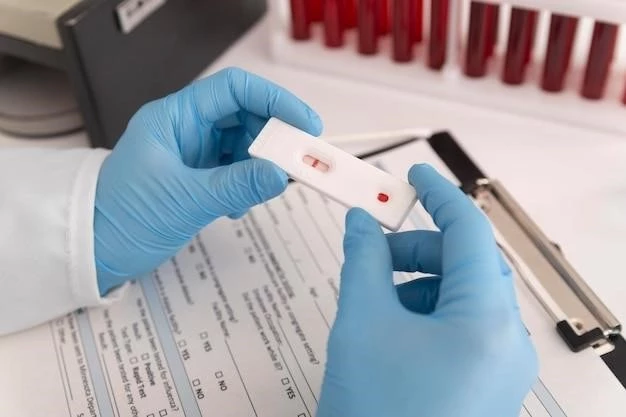Article Plan⁚ Disease — Primary Agammaglobulinemia
Primary agammaglobulinemia is a rare immune system disorder characterized by profoundly low or absent serum antibodies, leading to an increased risk of infections. This condition is often caused by genetic defects that affect the development of B cells, essential for antibody production.
Individuals with agammaglobulinemia, particularly X-linked agammaglobulinemia (XLA), experience recurrent and severe infections due to the lack of mature B cells. The primary cause of this disorder is a mutation in the Bruton tyrosine kinase gene (Btk), which plays a crucial role in B cell maturation.
XLA, the most common form of primary agammaglobulinemia, typically affects males and presents early in life, after maternal antibodies diminish. Patients with agammaglobulinemia are susceptible to various infections, including those caused by encapsulated bacteria that the immune system usually fights off.
Management of primary agammaglobulinemia often involves regular monitoring and immunoglobulin replacement therapy to prevent severe infections. Understanding the genetic and immunological aspects of this condition is crucial for effective diagnosis and treatment;
Causes of Primary Agammaglobulinemia
Primary agammaglobulinemia, such as X-linked agammaglobulinemia (XLA), is primarily caused by genetic mutations affecting B cell development. The most common form, XLA, is linked to a mutation in the Bruton tyrosine kinase gene (Btk). This mutation hinders the maturation of B cells, leading to severe antibody deficiency.
Individuals with XLA usually start showing symptoms after maternal antibodies wane, making them susceptible to severe infections. XLA is considered the first identified primary immune deficiency disease with a genetic cause, affecting males predominantly.
Understanding the genetic basis of primary agammaglobulinemia is crucial for diagnosis and treatment decisions. It is important to recognize the role of mutations in genes like Btk in disrupting B cell maturation and antibody production, contributing to the disease.
Various types of primary hypogammaglobulinemia, including agammaglobulinemia, can result from genetic defects impacting B cell development and antibody levels. Recognizing the genetic underpinnings of these conditions is essential for a comprehensive approach to management and treatment.
Types of Primary Agammaglobulinemia
Primary agammaglobulinemia encompasses various genetic immune system defects resulting in low or absent serum antibodies and B cell deficiencies. The most common form is X-linked agammaglobulinemia (XLA), characterized by a mutation in the Bruton tyrosine kinase gene (Btk) leading to severe antibody deficiency.
XLA, also known as Bruton agammaglobulinemia, primarily affects males and manifests early in life after maternal antibodies decrease. There are other types of agammaglobulinemia, including early and late-onset forms, each with distinct genetic and clinical characteristics.
Understanding the different types of primary agammaglobulinemia is crucial for accurate diagnosis and tailored treatment strategies. Genetic testing and immunological assessments play a significant role in identifying the specific subtype of agammaglobulinemia and guiding therapeutic interventions.
Patients with primary agammaglobulinemia, regardless of the type, require specialized care to manage their antibody deficiencies and susceptibility to infections effectively. Collaborating with healthcare providers experienced in treating primary immunodeficiencies is essential for optimal outcomes.

Symptoms and Diagnosis
Primary agammaglobulinemia, notably X-linked agammaglobulinemia (XLA), presents with symptoms like recurrent severe infections due to the absence of mature B cells and low antibody levels. Diagnosis involves immunological tests to assess serum antibody levels and B cell presence in the blood.
Individuals with primary agammaglobulinemia may experience frequent bacterial infections, particularly from encapsulated bacteria, affecting the respiratory tract and other body systems. Early signs often include persistent or severe infections that do not respond well to standard treatments.
Diagnosis of primary agammaglobulinemia typically involves blood tests to evaluate immunoglobulin levels, B cell counts, and genetic testing to identify specific mutations like those in the Bruton tyrosine kinase gene (Btk) associated with XLA. Immunological assessments play a crucial role in confirming the condition.
It is essential for healthcare providers to consider primary agammaglobulinemia in individuals presenting with recurrent, severe infections, especially if there is a family history of immunodeficiency. Timely and accurate diagnosis is key to initiating appropriate management strategies and preventing complications associated with this immune deficiency disorder.
X-Linked Agammaglobulinemia (XLA)
X-linked agammaglobulinemia (XLA) is a primary immunodeficiency disorder that primarily affects males due to a genetic mutation involving the Bruton tyrosine kinase gene (Btk). This mutation results in the absence of mature B cells, leading to severe antibody deficiency and recurrent infections.
Individuals with XLA typically experience the onset of symptoms after maternal antibodies diminish, making them vulnerable to infections from encapsulated bacteria. Early diagnosis of XLA through genetic testing is crucial to initiate appropriate management strategies, including immunoglobulin replacement therapy.
Effective management of XLA involves lifelong immunoglobulin replacement to supplement the missing antibodies and prevent severe infections. Regular monitoring and collaboration with healthcare providers experienced in treating primary immunodeficiencies are essential for optimal disease management and quality of life.
Understanding the genetic basis of X-linked agammaglobulinemia is key to providing comprehensive care and support to individuals affected by this rare immune disorder. It is important for patients and families to seek specialized medical advice and adhere to treatment recommendations to mitigate the risks associated with XLA.
Treatment Options
The treatment of X-linked agammaglobulinemia (XLA) typically involves immunoglobulin replacement therapy to compensate for the lack of antibodies in the blood. This therapy aims to provide the necessary immune protection against infections that individuals with XLA are unable to produce on their own.
Immunoglobulin replacement therapy is administered intravenously or subcutaneously based on the individual’s needs and can be lifelong. Regular monitoring of immunoglobulin levels and clinical status is essential to ensure that adequate immune protection is maintained.
In addition to immunoglobulin replacement, patients with XLA may require antibiotic therapy to manage acute infections effectively. Prophylactic antibiotics may also be prescribed to prevent certain types of infections due to the underlying immune deficiency.
Management of XLA often involves a multidisciplinary approach, including working closely with immunologists, infectious disease specialists, and other healthcare professionals experienced in treating primary immunodeficiency disorders. Genetic counseling may also be beneficial for families affected by XLA.
Management and Prognosis
Managing primary agammaglobulinemia, such as X-linked agammaglobulinemia (XLA), involves a comprehensive approach focusing on immunoglobulin replacement therapy to bolster immunity. Regular monitoring of immunoglobulin levels and close collaboration with healthcare providers specializing in primary immunodeficiencies are essential for effective management.
Additionally, individuals with XLA may require antibiotic therapy to treat infections promptly and may benefit from prophylactic antibiotics to prevent certain bacterial infections. Educating patients and families on infection prevention strategies and the importance of adherence to treatment regimens are vital for long-term management.
The prognosis for individuals with primary agammaglobulinemia, including XLA, has significantly improved with advances in medical care, leading to better control of infections and enhanced quality of life. Lifelong management and monitoring are essential to mitigate the risks of recurrent infections and ensure optimal outcomes.
Understanding the genetic basis of XLA and other forms of primary agammaglobulinemia is critical for personalized treatment plans and prognostic assessments. By actively engaging in a multidisciplinary care team and staying informed about the latest developments in immunodeficiency research, individuals with XLA can navigate their condition more effectively.
Genetic Aspects of Primary Agammaglobulinemia
Primary agammaglobulinemia, including X-linked agammaglobulinemia (XLA), is associated with genetic mutations impacting B cell development and antibody production. XLA, specifically, results from a mutation in the Bruton tyrosine kinase gene (Btk), crucial for B cell maturation.
Understanding the genetic underpinnings of primary agammaglobulinemia is essential for precise diagnosis and targeted treatments. Genetic testing plays a significant role in identifying specific mutations like Btk defects in XLA patients to guide personalized management strategies.
XLA is considered the first identified primary immune deficiency disease with a genetic cause, predominantly affecting males due to its X-linked inheritance pattern. The lack of mature B cells in XLA patients highlights the critical role of genetic factors in disrupting normal immune function.
Families with a history of primary agammaglobulinemia should consider genetic counseling to understand the inheritance pattern and potential risks. By delving into the genetic aspects of this disorder, healthcare providers can tailor treatment plans and offer insights into the prognosis of individuals affected by primary agammaglobulinemia.
Impact on Immune System Function
Primary agammaglobulinemia, like X-linked agammaglobulinemia (XLA), significantly affects the immune system’s function by leading to low or absent antibody levels and compromised immune responses. The absence of mature B cells in individuals with agammaglobulinemia hinders the body’s ability to fight off infections effectively.
XLA specifically targets the B cell development process, resulting in severe antibody deficiency and an increased susceptibility to infections, particularly from encapsulated bacteria. This compromised immune system function poses a significant challenge in combating pathogens and protecting the body from various infectious agents.
Understanding the impact of primary agammaglobulinemia on immune system function is crucial for devising effective treatment strategies to provide the necessary immune support. Immunoglobulin replacement therapy plays a critical role in boosting immune defenses and addressing the antibody deficiency characteristic of this condition.
Individuals with agammaglobulinemia, including those with XLA, require ongoing medical management to optimize immune system function, reduce the risk of severe infections, and improve quality of life. Seeking specialized care from healthcare providers familiar with primary immunodeficiencies is essential for maintaining immune health in individuals affected by agammaglobulinemia.
Recurrent Infections and Complications
Individuals with primary agammaglobulinemia, especially X-linked agammaglobulinemia (XLA), are prone to recurrent and severe infections due to the lack of functional B cells and deficient antibody production. The absence of mature B cells hampers the immune system’s ability to combat infections effectively, leading to increased susceptibility to various pathogens.
Common complications associated with primary agammaglobulinemia include respiratory tract infections, sinusitis, otitis media, and pneumonia, often caused by encapsulated bacteria. These infections can be challenging to treat and may require prolonged courses of antibiotics and immunoglobulin replacement therapy to prevent recurrence.
Recurrent infections in individuals with XLA can significantly impact their quality of life and overall health. It is essential for individuals with primary agammaglobulinemia to work closely with healthcare providers specializing in immunodeficiencies to monitor infections, manage complications proactively, and optimize treatment strategies to minimize the risks associated with recurrent infections.

Understanding the complexities of managing recurrent infections and associated complications in primary agammaglobulinemia is crucial for enhancing the overall well-being and long-term health outcomes of individuals affected by this rare immune deficiency disorder.
Research and Developments
Ongoing research in primary agammaglobulinemia, particularly focusing on X-linked agammaglobulinemia (XLA), aims to enhance diagnostic methods, improve treatment options, and explore potential gene therapies. Scientists are investigating genetic modifiers that may influence the severity of the condition and exploring novel therapeutic approaches to address the underlying immune deficiencies.
Developments in XLA research include advancements in understanding the immune system’s intricate mechanisms affected by Btk gene mutations. Researchers are exploring innovative strategies to boost immune function in individuals with XLA, including targeted therapies to enhance antibody production and prevent recurrent infections.
Genetic studies in primary agammaglobulinemia are shedding light on the diverse genetic alterations that contribute to antibody deficiencies and immune system impairments. By elucidating the genetic landscape of agammaglobulinemia, researchers are paving the way for personalized treatment strategies tailored to the specific genetic profiles of affected individuals.
Collaborative efforts between researchers, healthcare providers, and patient advocacy groups are essential for advancing the understanding of primary agammaglobulinemia and translating research findings into clinical practice. By staying informed about the latest research developments, individuals affected by XLA can benefit from cutting-edge therapies and improved management approaches.
Support Resources for Patients and Families
For individuals and families affected by primary agammaglobulinemia, accessing support resources and specialized care is essential in managing this immune deficiency disorder effectively. Patient advocacy groups, such as the Immune Deficiency Foundation and primary immunodeficiency organizations, offer valuable information, support networks, and educational resources.
Connecting with healthcare providers experienced in treating primary immunodeficiencies and genetic counselors can provide valuable guidance on treatment options, genetic aspects, and prognosis. These professionals play a crucial role in offering personalized care plans and addressing the unique needs of individuals with agammaglobulinemia.
Online platforms and forums dedicated to primary immunodeficiencies can serve as valuable resources for sharing experiences, accessing updated information, and connecting with individuals facing similar challenges. Patients and families can benefit from the collective knowledge, shared insights, and emotional support offered by these communities.
Seeking guidance from specialized healthcare teams, staying informed about the latest advancements in agammaglobulinemia research, and actively engaging with support resources can empower patients and families to navigate the complexities of this rare immune disorder and enhance their overall quality of life.
Conclusion and Future Outlook
In conclusion, primary agammaglobulinemia, particularly X-linked agammaglobulinemia (XLA), presents significant challenges due to the absence of mature B cells and deficient antibody production. The genetic basis of this disorder, notably mutations like those affecting the Bruton tyrosine kinase gene (Btk), plays a crucial role in disrupting immune function and predisposing individuals to recurrent infections.
Looking ahead, ongoing research endeavors focusing on improved diagnostic techniques, novel treatment modalities, and potential gene therapies offer promise for enhancing the management of primary agammaglobulinemia. Genetic studies continue to unravel the complex genetic landscape of this rare immune deficiency, paving the way for personalized interventions tailored to individual genetic profiles.
Advancements in understanding the immune system’s intricacies affected by agammaglobulinemia mutations underscore the importance of multidisciplinary collaboration among researchers, healthcare providers, and patient advocacy groups. By staying engaged with evolving research and treatment developments, individuals with XLA can anticipate better outcomes and a brighter future in managing their condition.
In conclusion, while primary agammaglobulinemia poses significant health challenges, the relentless pursuit of scientific progress and the support of dedicated healthcare professionals and advocacy resources offer optimism for improved treatments, better quality of life, and enhanced outcomes for individuals and families affected by this complex immune deficiency disorder.
